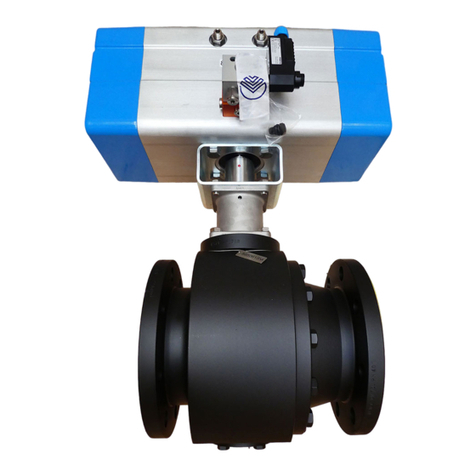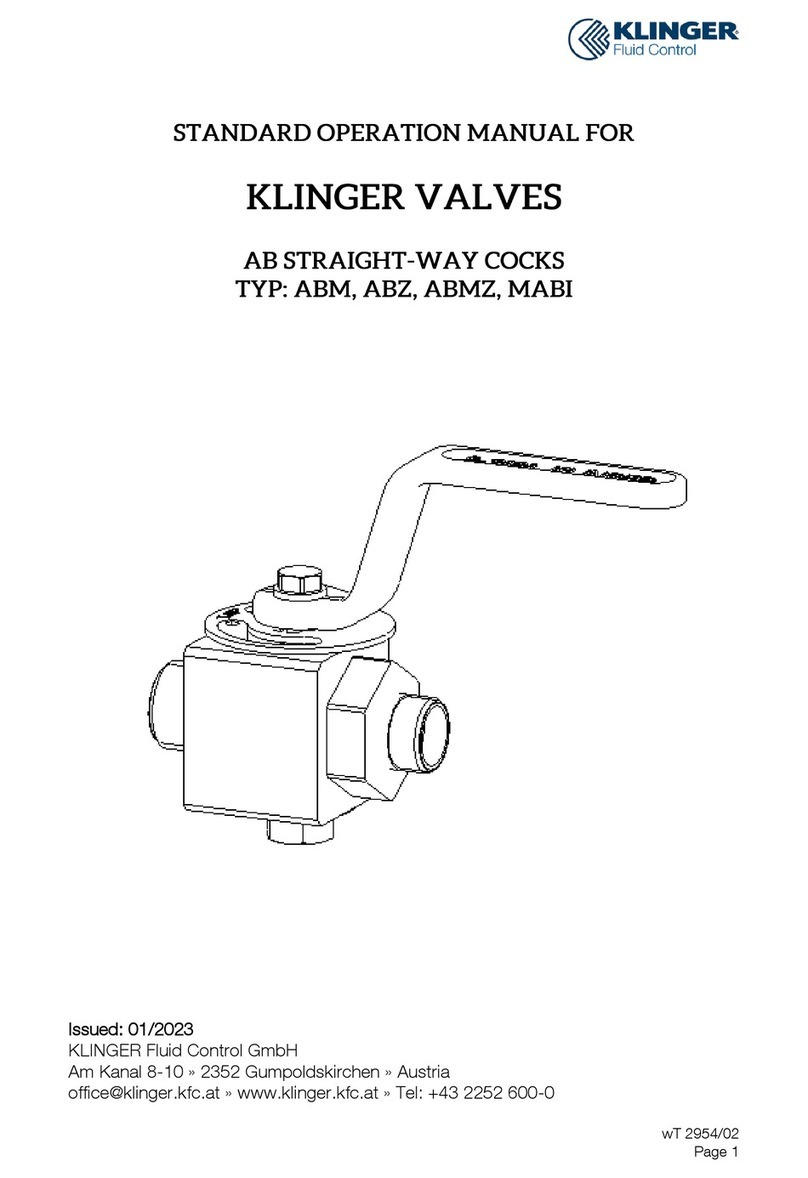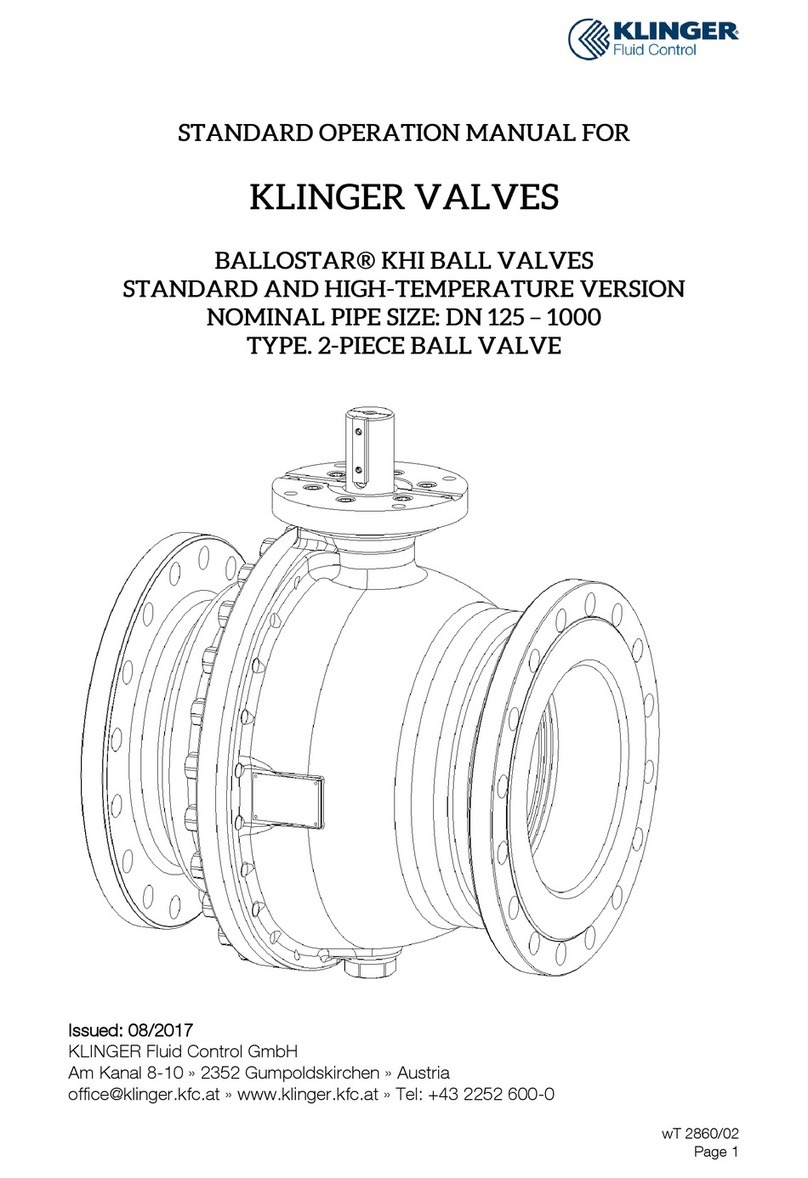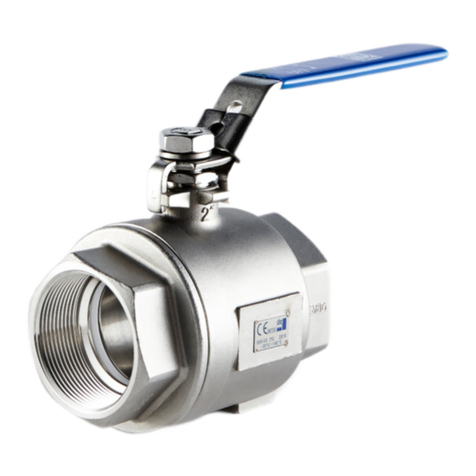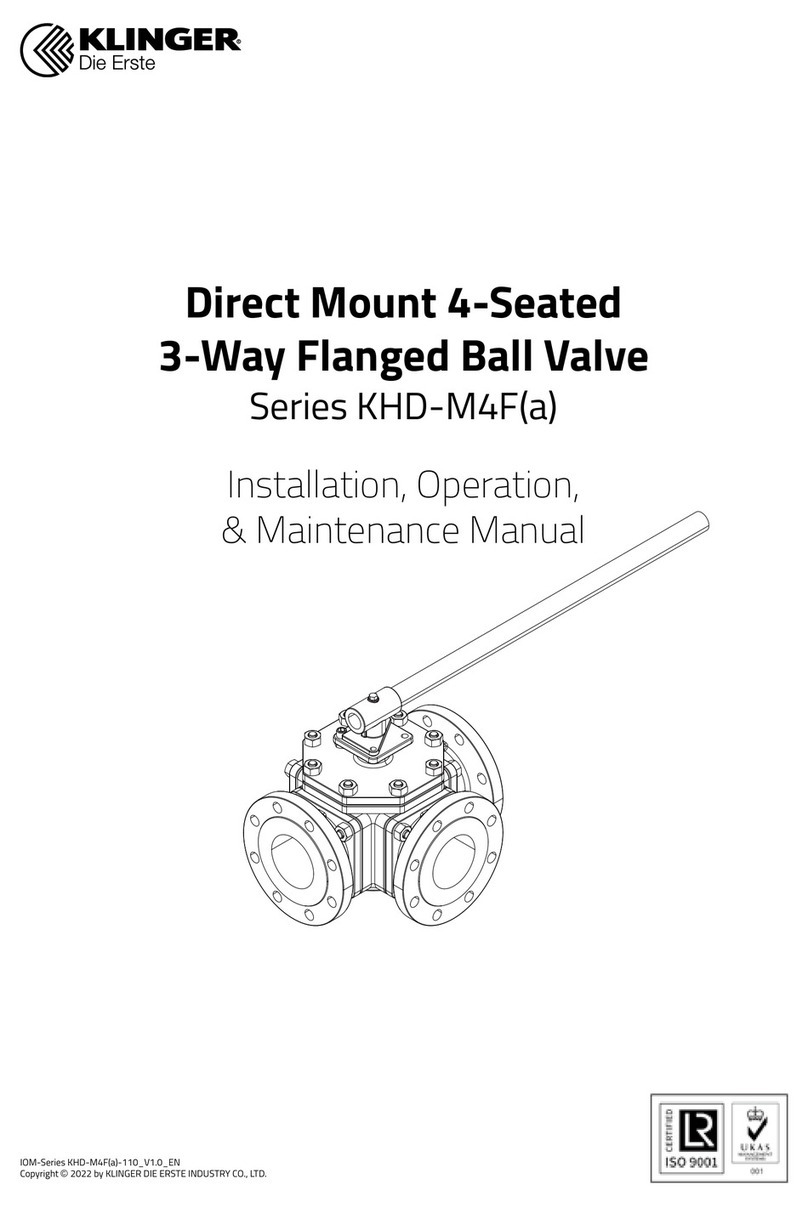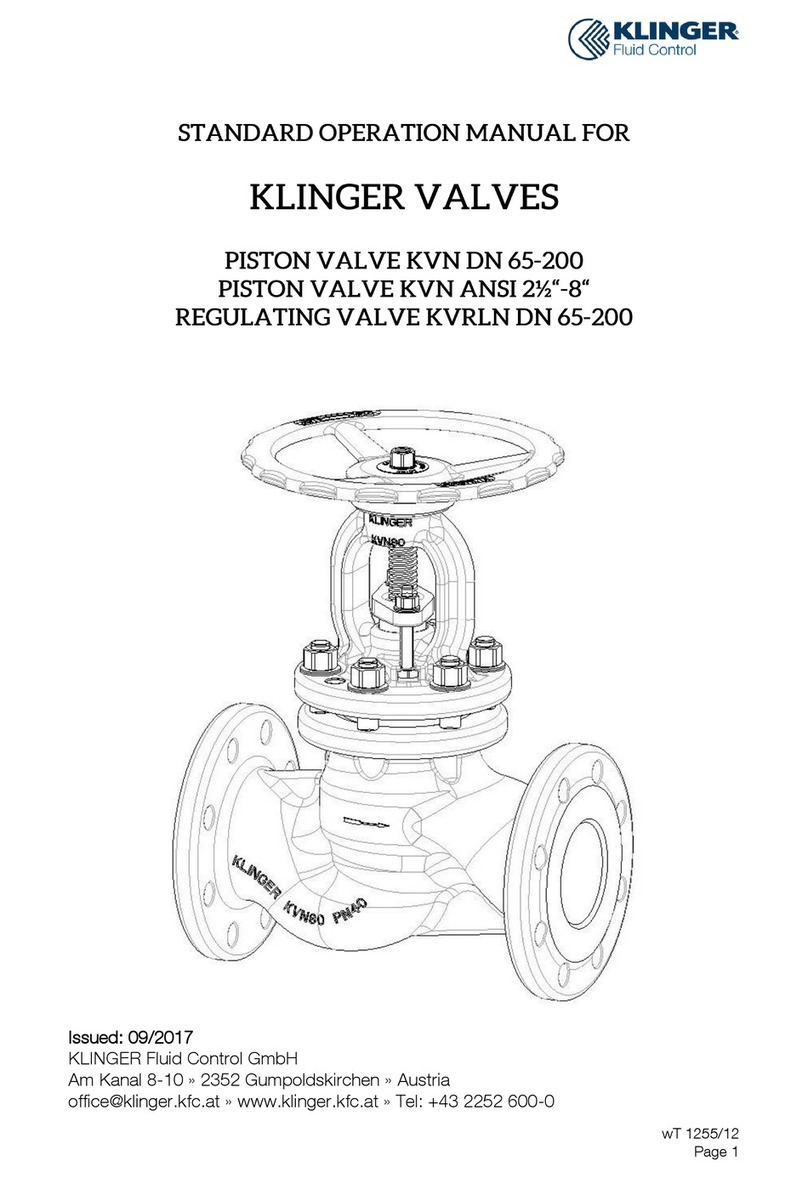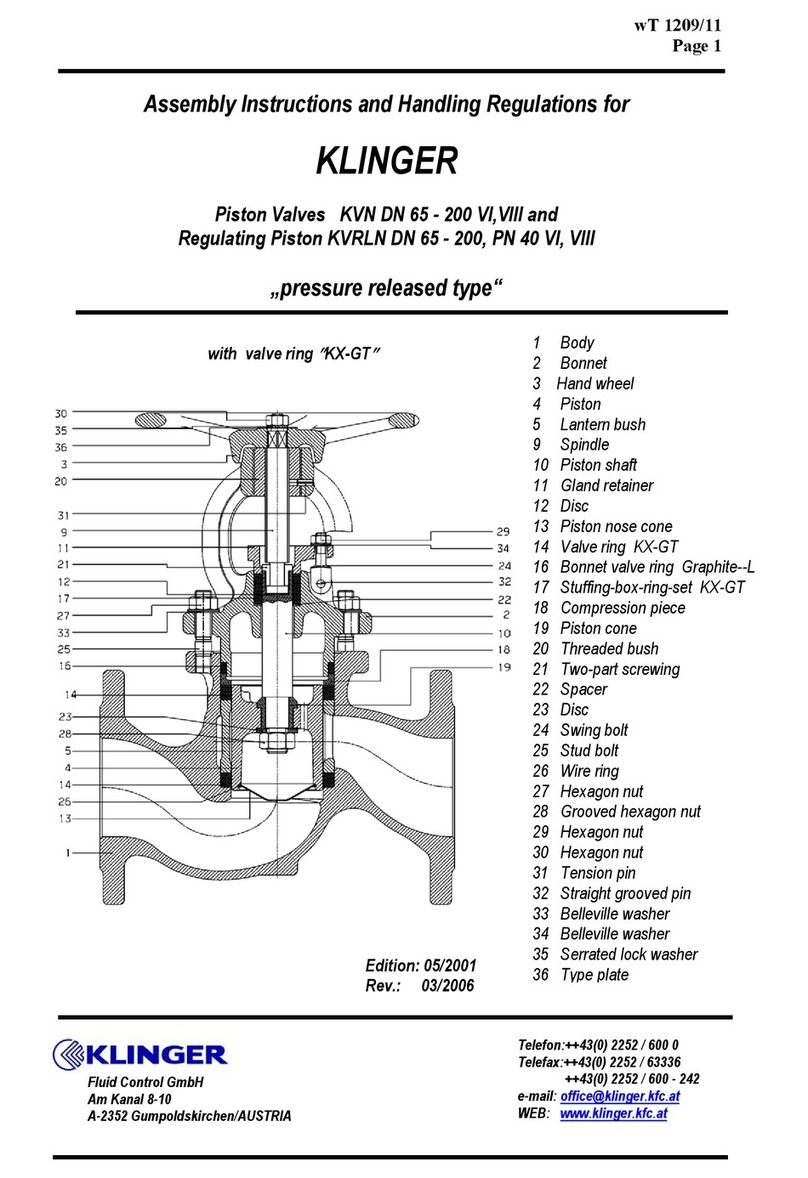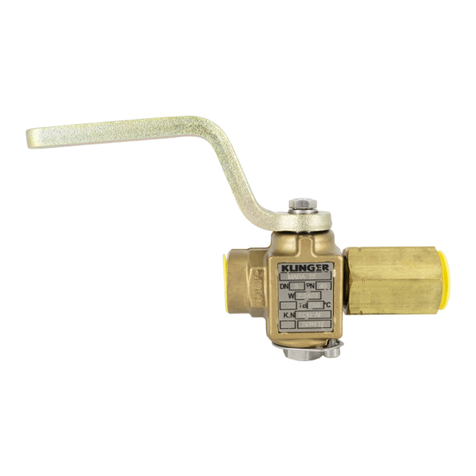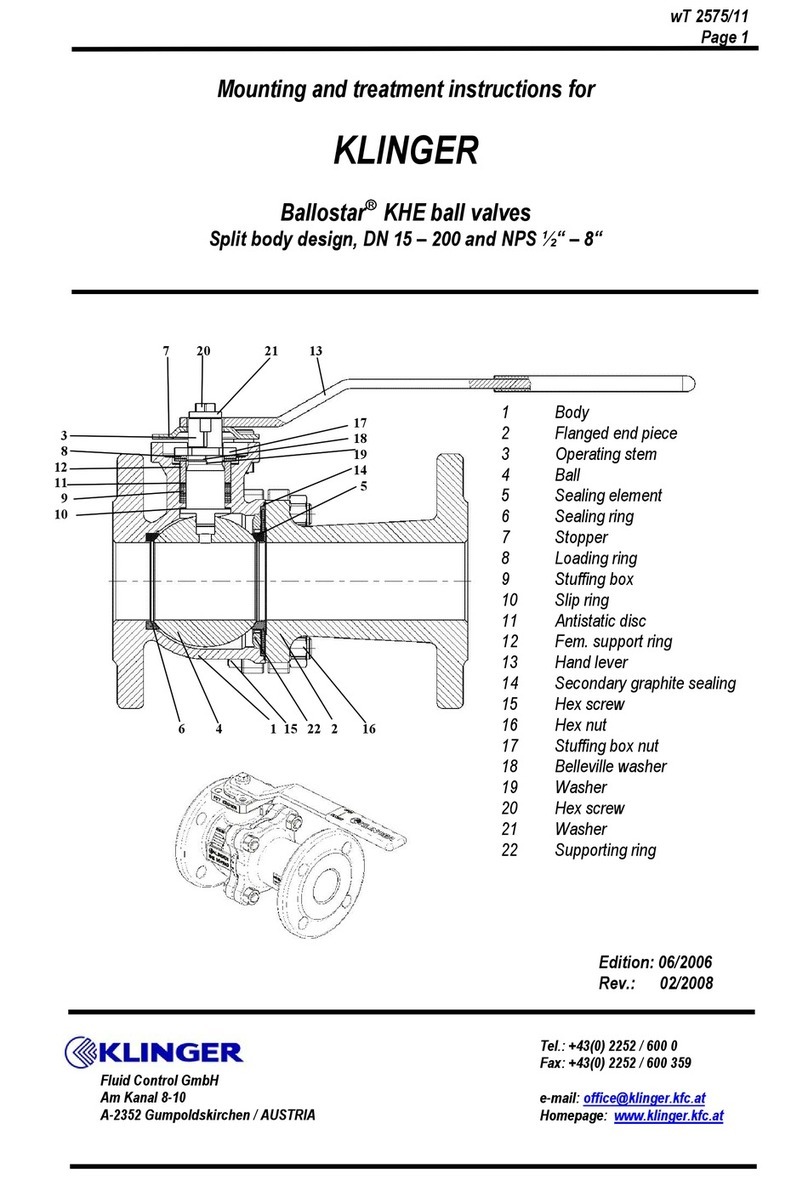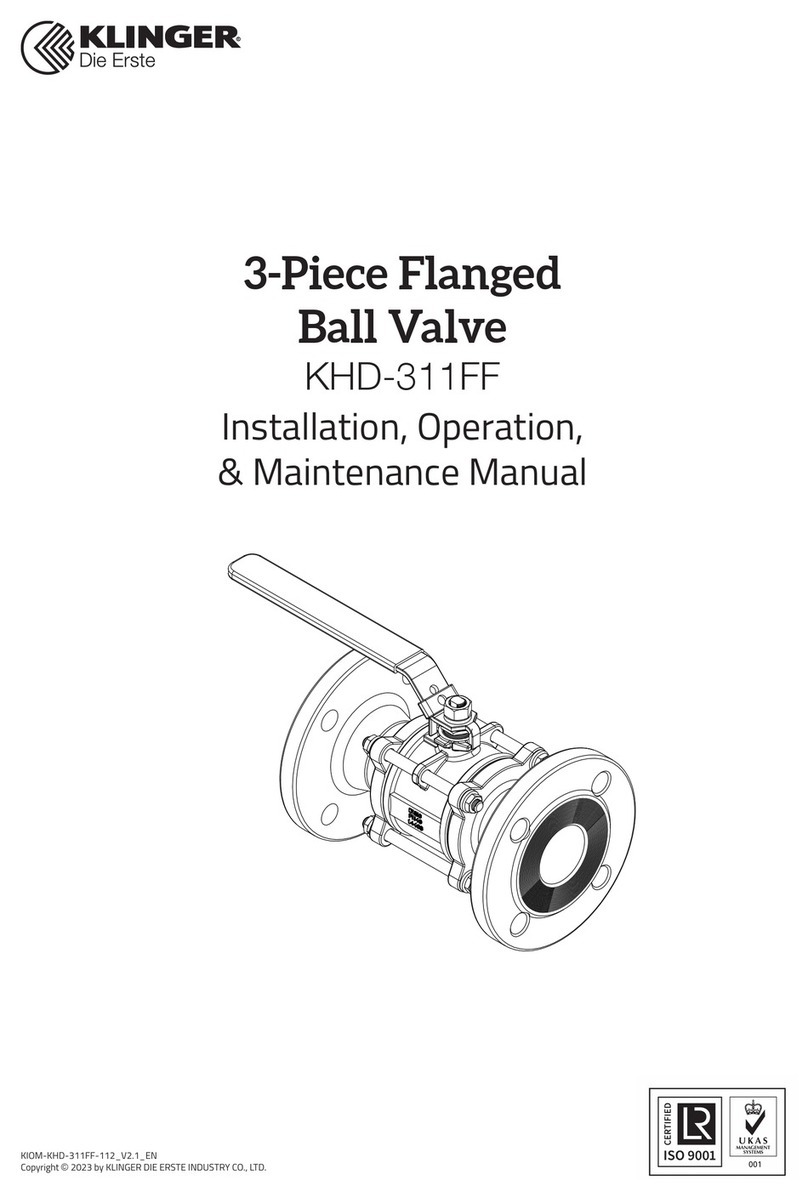wT 2858/02
Page 2
Contents
1Declaration of Conformity ......................................................................................3
2Individual Parts Designation...................................................................................4
3Proper Use ...........................................................................................................5
4Testing of KLINGER Valves....................................................................................5
5Labeling of the Valves............................................................................................5
6Safety Instructions.................................................................................................6
6.1 General Notes on Safety ....................................................................................... 6
6.2 Safety Instructions for Operators ........................................................................... 6
6.3 Hazard Warnings .................................................................................................. 7
7Technical Data ......................................................................................................9
7.1 Material codes...................................................................................................... 9
7.2 P/T Diagrams ....................................................................................................... 9
7.3 Tightening Torques and Width Across Flats..........................................................11
7.4 Table of Weights..................................................................................................11
7.5 Material Combinations .........................................................................................12
7.6 Exploded View KHA-FL, KHA-FK .........................................................................13
7.7 Exploded View KHA-G, KHA-SK, KHA-SL............................................................14
7.8 Sealing Element for Special Requirements............................................................15
7.9 Special Requirements Stuffing Box.......................................................................16
8Transportation and Storage.................................................................................17
9Operating Principle..............................................................................................18
10 Mode of Operation ..............................................................................................18
11 Installation and Putting into Service Regulations...................................................20
11.1 Welding Instructions ............................................................................................21
11.1.1 Welding Instructions for Short Design (KHA-SK)..............................................21
11.1.2 Welding Instructions for Long Design (KHA-SL)...............................................22
12 Service and Maintenance ....................................................................................22
12.1 Seal Replacement................................................................................................22
12.1.1 Seal Replacement on the Operating Stem.......................................................22
12.1.2 Replacement of Sealing Elements (Flange Connection)....................................23
12.1.3 Replacement of Sealing Elements (Welded and Threaded Ends)......................23
12.2 Standard Lubricants ............................................................................................23
13 Actuator Mounting ..............................................................................................24
13.1 Fitting the Actuator ..............................................................................................24
14 Spare Parts List ..................................................................................................25
15 Disposal..............................................................................................................25
